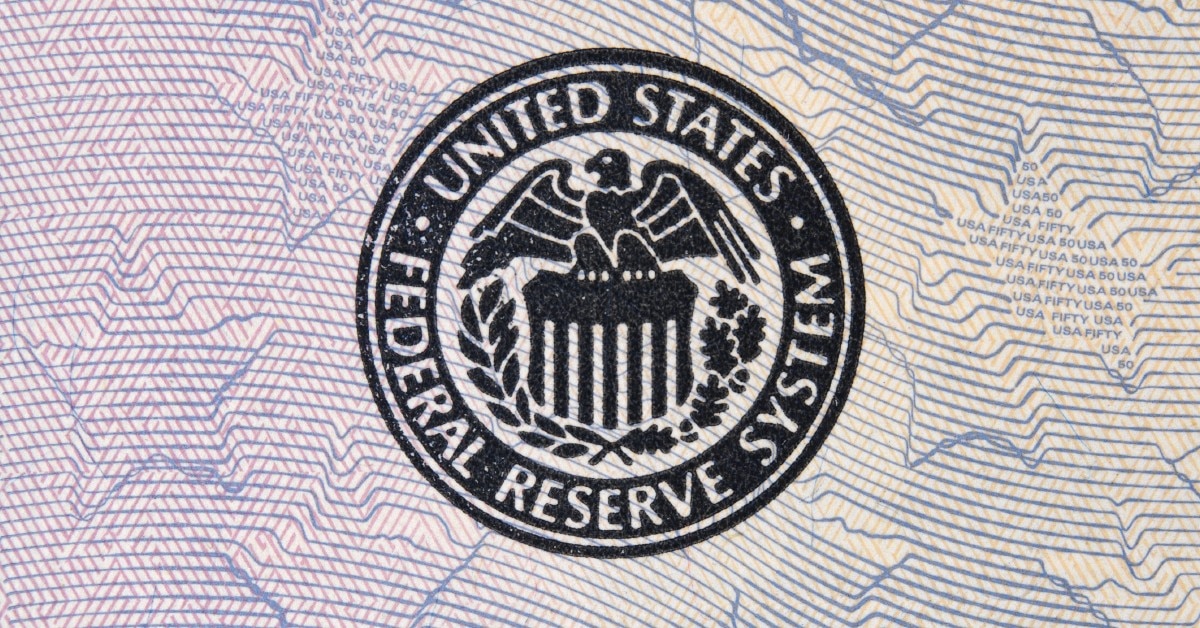U.S. Federal Reserve sees light of inflation goal, but opts to hold rates for now
Richard Schmidt
June 12, 2024
Key messages
- No change to the federal funds target range, holding at 5.25%-to-5.5%
- One predicted cut this year, to 5.1%, and four cuts in 2025
- Fed says “inflation has eased substantially,” but “is still too high”

Economic indicators look better, but the U.S. Federal Reserve (Fed) still wants to see more of the same in its bid to tame inflation. It announced its decision June 12 to leave the target for the federal funds rate unchanged at 5.25%-to-5.5%.
Although the exact timing remains uncertain, the Federal Open Market Committee now predicts a single cut to borrowing costs later this year, down from two, followed by four cuts in 2025, up from three. As we had been expecting, the Fed continues to push out expected easing rather than reduce their total projections of it. Their next scheduled meetings are in July, September, November (the day after the U.S. presidential election) and December.
While the Fed statement cited making "modest further progress," towards its 2% inflation target—upgraded from May's "lack of further progress"—it still wants more time to gain confidence.
New inflation numbers boosted sentiment
Inflation eased notably over the past year but is higher than expected above the Fed's 2% target. Total Personal Consumption Expenditures Price (PCE) Index prices rose 2.7% over the 12 months ending in March; excluding food and energy, core PCE prices rose 2.8% over the year.
Just hours before the rate announcement, the U.S. Bureau of Labor Statistics released the latest Consumer Price Index report. It showed that, on a monthly basis, prices held flat in May for the first time since July 2022.
"We've made pretty good progress on inflation with our current stance," said Jerome Powell, Fed chair, speaking to reporters following the announcement.
Signs of strong underlying demand in U.S. economy
GDP growth moderated from 3.4% in the fourth quarter of 2023 to 1.6% in the first quarter of 2024. But first quarter growth of 3.1% seen in private domestic final purchases was interpreted by the Fed as a clearer signal of underlying demand—as strong as in the last half of 2023.
The labour market remains relatively tight, with historically low unemployment, but supply and demand conditions have come into better balance.
For investors, patience and optimism—with a side of caution
The resilience of the U.S. economy means the Fed faces fewer of the same pressures to lower borrowing rates in the next few months, compared to the Bank of Canada, which opted to cut rates first in June.
However, the pace of cuts may be increasingly influenced by policy decisions by the Fed.
As we watch for the Fed to make its first move later this year, we continue to factor-in the economic impact of higher rates, over a longer time.
In our portfolios that include a tactical asset allocation overlay, we remain at a neutral equity position relative to fixed income and cash. The short-term acceleration in economic activity is countering our expectations for a more meaningful slowdown in the global economy. However, the aforementioned red flags are preventing us from moving to an overweight equity position. Inflation and concentrated markets remain the key risks to monitor.
Over the long term, we remain firmly anchored in our long-term strategic asset allocation process to position portfolios through uncertainties and market volatility. Read more about our short- and long-term portfolio considerations.
Richard Schmidt

Richard Schmidt, CFA, is an Associate Portfolio Manager with the Multi-Asset Management Team of Scotia Global Asset Management. His primary focus is on North American equity funds and pools.
Commissions, trailing commissions, management fees and expenses may be associated with mutual fund investments. Please read the prospectus before investing. Mutual funds are not guaranteed or insured by the Canada Deposit Insurance Corporation or any other government deposit insurer; their values change frequently, and past performance may not be repeated.
This document is provided for information purposes only. It is not to be relied upon as financial, tax or investment advice or guarantees about the future, nor should it be considered a recommendation to buy or sell. Information contained in this document, including information relating to interest rates, market conditions, tax rules, and other investment factors, are subject to change without notice, and The Bank of Nova Scotia is not responsible to update this information. All third-party sources are believed to be accurate and reliable as of the date of publication, and The Bank of Nova Scotia does not guarantee its accuracy or reliability. Readers should consult their own professional advisor for specific financial, investment and/or tax advice tailored to their needs to ensure that individual circumstances are considered properly and action is taken based on the latest available information. This commentary may contain forward-looking statements based on current expectations and projections about future general economic factors. Forward-looking statements are subject to inherent risks and uncertainties which may be unforeseeable and such expectations and projections may be incorrect in the future. Forward-looking statements are not guarantees of future performance and you should avoid placing undue reliance upon them. This publication and all the information, opinions and conclusions contained herein are protected by copyright. This publication may not be reproduced in whole or in part without the prior express consent of The Bank of Nova Scotia.
To the extent this document contains information or data obtained from third party sources, it is believed to be accurate and reliable as of the date of publication, but Scotia Global Asset Management does not guarantee its accuracy or reliability.
Scotia Global Asset Management is a business name used by 1832 Asset Management L.P., a limited partnership, the general partner of which is wholly owned by Scotiabank.
Scotiabank® includes The Bank of Nova Scotia and its subsidiaries and affiliates, including 1832 Asset Management L.P. and Scotia Securities Inc.
ScotiaFunds® are managed by Scotia Global Asset Management. ScotiaFunds are available through Scotia Securities Inc. and from other dealers and advisors. Scotia Securities Inc. is wholly owned by The Bank of Nova Scotia and is a member of the Canadian Investment Regulatory Organization.
® Registered trademarks of The Bank of Nova Scotia, used under licence.
© Copyright 2024 The Bank of Nova Scotia. All rights reserved.

